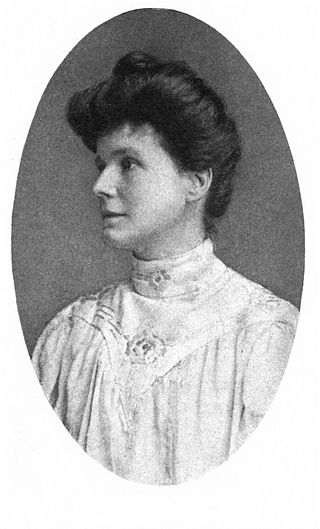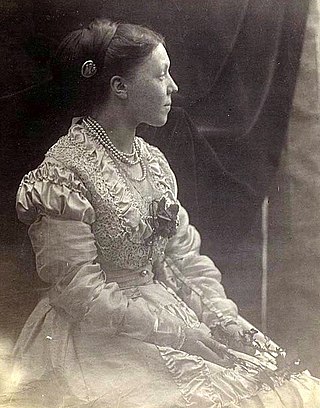
Adeline Virginia Woolf was an English writer. She is considered one of the most important modernist 20th-century authors. She pioneered the use of stream of consciousness as a narrative device.
In literary criticism, stream of consciousness is a narrative mode or method that attempts "to depict the multitudinous thoughts and feelings which pass through the mind" of a narrator.

The English novel is an important part of English literature. This article mainly concerns novels, written in English, by novelists who were born or have spent a significant part of their lives in England, Scotland, Wales, or Northern Ireland. However, given the nature of the subject, this guideline has been applied with common sense, and reference is made to novels in other languages or novelists who are not primarily British, where appropriate.

John Cowper Powys was an English novelist, philosopher, lecturer, critic and poet born in Shirley, Derbyshire, where his father was vicar of the parish church in 1871–1879. Powys appeared with a volume of verse in 1896 and a first novel in 1915, but gained success only with his novel Wolf Solent in 1929. He has been seen as a successor to Thomas Hardy, and Wolf Solent, A Glastonbury Romance (1932), Weymouth Sands (1934), and Maiden Castle (1936) have been called his Wessex novels. As with Hardy, landscape is important to his works. So is elemental philosophy in his characters' lives. In 1934 he published an autobiography. His itinerant lectures were a success in England and in 1905–1930 in the United States, where he wrote many of his novels and had several first published. He moved to Dorset, England, in 1934 with a US partner, Phyllis Playter. In 1935 they moved to Corwen, Merionethshire, Wales, where he set two novels, and in 1955 to Blaenau Ffestiniog, where he died in 1963.

Mrs Dalloway is a novel by Virginia Woolf published on 14 May 1925. It details a day in the life of Clarissa Dalloway, a fictional upper-class woman in post-First World War England. It is one of Woolf's best-known novels.
Dorothy Miller Richardson was a British author and journalist. Author of Pilgrimage, a sequence of 13 semi-autobiographical novels published between 1915 and 1967—though Richardson saw them as chapters of one work—she was one of the earliest modernist novelists to use stream of consciousness as a narrative technique. Richardson also emphasises in Pilgrimage the importance and distinct nature of female experiences. The title Pilgrimage alludes not only to "the journey of the artist ... to self-realisation but, more practically, to the discovery of a unique creative form and expression".
A book series is a sequence of books having certain characteristics in common that are formally identified together as a group. Book series can be organized in different ways, such as written by the same author, or marketed as a group by their publisher.

May Sinclair was the pseudonym of Mary Amelia St. Clair, a popular British writer who wrote about two dozen novels, short stories and poetry. She was an active suffragist, and member of the Woman Writers' Suffrage League. She once dressed up as a demure, rebel Jane Austen for a suffrage fundraising event. Sinclair was also a significant critic in the area of modernist poetry and prose, and she is attributed with first using the term 'stream of consciousness' in a literary context, when reviewing the first volumes of Dorothy Richardson's novel sequence Pilgrimage (1915–1967), in The Egoist, April 1918.

Modernist literature originated in the late 19th and early 20th centuries, and is characterised by a self-conscious separation from traditional ways of writing in both poetry and prose fiction writing. Modernism experimented with literary form and expression, as exemplified by Ezra Pound's maxim to "Make it new." This literary movement was driven by a conscious desire to overturn traditional modes of representation and express the new sensibilities of the time. The immense human costs of the First World War saw the prevailing assumptions about society reassessed, and much modernist writing engages with the technological advances and societal changes of modernity moving into the 20th century. In Modernist Literature, Mary Ann Gillies notes that these literary themes share the "centrality of a conscious break with the past", one that "emerges as a complex response across continents and disciplines to a changing world".

Anne Isabella, Lady Ritchie, eldest daughter of William Makepeace Thackeray, was an English writer, whose several novels were appreciated in their time and made her a central figure on the late Victorian literary scene. She is noted especially as the custodian of her father's literary legacy, and for short fiction that places fairy tale narratives in a Victorian milieu. Her 1885 novel Mrs. Dymond introduced into English the proverb, "Give a man a fish and you feed him for a day; teach a man to fish and you feed him for life."

Alan Elsden Odle (1888–1948) was an English illustrator, remembered today as the husband of the English novelist Dorothy Richardson, whom he married in 1917. His grotesque and subversive style was a precursor of surrealism. He illustrated an English edition of Voltaire's Candide, Mark Twain's 1601: A Tudor Fireside Conversation, a salute to scatology and Elizabethan manners, and The Mimiambs of Herondas. He also designed the dust jacket for James Hanley's Ebb and Flow, other Hanley novels for Lane, and Dorothy Richardson's Backwater (1916). He contributed to a number of periodicals such as The Gypsy, The Golden Hind (1922–25), the US Vanity Fair, The Studio, and the UK Argosy.

Monday or Tuesday is a 1921 short story collection by Virginia Woolf published by The Hogarth Press. 1000 copies were printed with four full-page woodcuts by Vanessa Bell. Leonard Woolf called it one of the worst printed books ever published because of the typographical mistakes in it. Most mistakes were corrected for the US edition published by Harcourt Brace. It contains eight stories:
Miriam Constance Beaumont Vaughan, better known by her pseudonym Olive Moore, was a modernist English writer best known for three well-esteemed novels: Celestial Seraglio (1929), Spleen (1930), and Fugue (1932), and for the acerbic essay collection The Apple Is Bitten Again (1934). She also produced an essay on D.H. Lawrence, entitled Further Reflections on the Death of a Porcupine, which was privately printed in 1933 and included in her essay collection. Her Collected Writings was published in 1992.
Ellen G. Friedman is an American author, editor, and Professor of English and Women's & Gender Studies at The College of New Jersey where she serves as Coordinator of the Holocaust and Genocide Studies program. Friedman is on the Undergraduate, Graduate, and Honors Faculties. She is the advisor to The Women's Center. Her current research is in cultural and gender studies.
This article is focused on English-language literature rather than the literature of England, so that it includes writers from Scotland, Wales, and the whole of Ireland, as well as literature in English from former British colonies. It also includes, to some extent, the United States, though the main article for that is American literature.

Pointed Roofs, published in 1915, is the first work in Dorothy Richardson's (1873–1957) series of 13 semi-autobiographical novels titled Pilgrimage, and the first complete stream of consciousness novel published in English. The novelist May Sinclair (1863–1946) first applied the term "stream of consciousness" In a review of Pointed Roofs.

Amabel Williams-Ellis was an English writer, critic, and an early member of the Bloomsbury Group. As well as publishing her own writings, Williams-Ellis was a prolific editor, translator, and anthologist, compiling collections of fairy stories, folk tales, and science fiction.

Mr. Bennett and Mrs. Brown is an essay by Virginia Woolf published in 1924 which explores modernity.
Heather Elizabeth Ingman is a British academic, noted for her work on Irish and British women's writing, the Irish short story, gender studies and modernism. Also a novelist and journalist, Ingman has worked in Ireland and the UK, especially at Trinity College Dublin, where she is an Adjunct Professor of English and Research Fellow in Gender Studies.
Ariela Freedman is a professor at Concordia University, and author of several books.